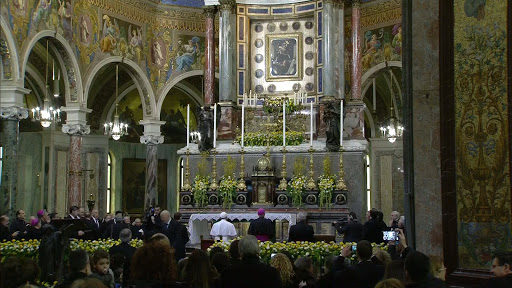Lenten Campaign 2025
This content is free of charge, as are all our articles.
Support us with a donation that is tax-deductible and enable us to continue to reach millions of readers.
Naples (in Greek, Nea Polis, the New City) is not precisely new. It was founded by Greek settlers in 470 BC. Indeed, one of the many reasons that brings flocks of tourists year after year to this Italian city is the old city of Naples, its historic center – a UNESCO World Heritage site that “retains the imprint of the successive cultures that emerged in Europe and the Mediterranean basin.”
The still active Mount Vesuvius overlooks the city – the very same volcano that blanketed the nearby Roman cities of Pompeii and Ercolano in ash and lava. As explained by Bret Thomas OFS, “The destruction was so sudden that the city’s excavation revealed a snapshot of ancient Roman life frozen in time when the town was dug out by archaeologists in the 19th century.”
The ruins of Pompeii bring an impressive number of visitors year after year – for obvious reasons. But the Shrine of the Virgin of the Rosary of Pompeii does, too.
The Pompeii Shrine has a long and moving history – and you can read all about it in this article. Built on what once was an almost abandoned small-town church, the shrine of the Virgin of the Rosary of Pompeii is now a renowned pilgrimage destination, its miraculous image of Our Lady of the Rosary being the object of deep veneration.
On September 12, the community that gathers in this shrine solemnly celebrated the dedication of their new altar.

The rite was presided over by the Archbishop of Pompeii, Msgr. Tommaso Caputo.
Inside one of the eight marble columns supporting the new altar will be laid the relics of Blessed Bartolo Longo, the founder of the shrine, and those of two saints who were instrumental in the realization of his mission in Pompeii: St. Ludovico da Casoria and St. Caterina Volpicelli.
“The materials, colors and decorations of the new liturgical arrangement,” explained the archbishop of Pompeii, “are in harmony with the altar that Blessed Bartolo Longo had built in 1887. In this way, too, we experience continuity with the thought of our founder.”
Engraved on the front of the new altar are the words “Blessed are those invited to the supper of the Lamb.”
With the new arrangement, visitors can now clearly admire the splendid mosaic that Longo himself desired. The mosaic depicts the Lamb of the Apocalypse enthroned (the symbol of the risen Christ, who reigns victorious). The Lamb is carrying the sealed Book of Life – pointing at the coming revelation of the meaning of all history, of humanity as a whole, and of individual souls.










